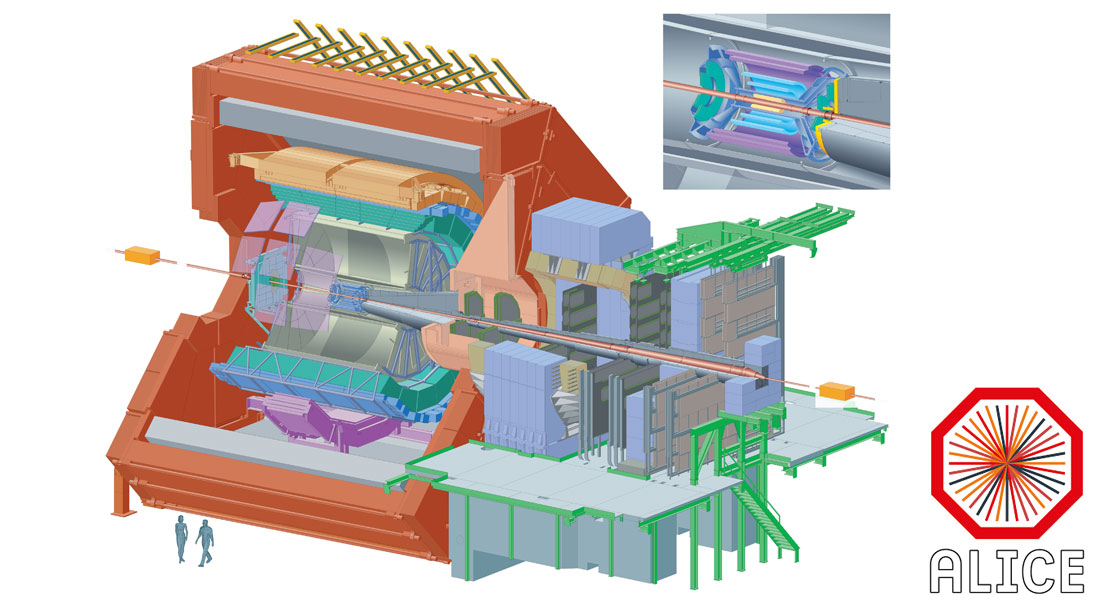Particle and Astroparticle Phemonology
One starts with what's observed and aims to build a holistic theory of Nature in a bottom-up fashion. In doing so one has to address not only particle physics challenges, but also the whole structure of the Universe, where particle physics affects cosmological observables in many aspects. In this way physics of micro- and macro-worlds becomes interconnect.
Our group is searching for new particles at both accelerator and cosmic frontiers. We explore the hypothesis that new particles are light, and very feebly interacting. In particular we search for heavy neutral leptons (a.k.a sterile neutrinos) - particles that may be responsible for some (maybe even all) beyond-the-Standard-Model phenomena.
The beginning of the XXth century saw several scientific revolutions. Along with the birth of quantum physics and relativity, it was understood that the Milky Way is not the entirety of the Universe and that billions of galaxies fly away from the Earth — the Universe expands.
 Along with Eistein’s General Relativity this gave birth to modern cosmology. Application of the laws of atomic, nuclear and particle physics to the Universe as a whole led to the construction of the Hot Big Bang theory.
Along with Eistein’s General Relativity this gave birth to modern cosmology. Application of the laws of atomic, nuclear and particle physics to the Universe as a whole led to the construction of the Hot Big Bang theory.
Today we can describe in remarkable details how the Universe had started and evolved.
This success, however, came with a “grain of salt”: while the composition of the Universe is measured with high precision, some yet unknown particles are needed to explain its constituents.
In particular we do not understand
- what gave rise to the asymmetry between matter and antimatter in the early Universe
- what microscopic physics is behind mysterious dark matter a dominant mass fraction of the Universe
Thus new particles, responsible for these and other phenomena should exist!
 This knowledge is both exciting is perplexing because we do not see any hints of these new particles in our laboratory experiments. The last predicted by unseen ingredient of the Standard Model of particle physics - the Higgs boson - was found in 2012 closing the Standard Model. Beyond it we have no firm predictions about the properties of hypothetical particles
This knowledge is both exciting is perplexing because we do not see any hints of these new particles in our laboratory experiments. The last predicted by unseen ingredient of the Standard Model of particle physics - the Higgs boson - was found in 2012 closing the Standard Model. Beyond it we have no firm predictions about the properties of hypothetical particles
Our group tries to find the answers to the cosmic mysteries at both accelerator and cosmic frontiers.
Specific questions that we address include:
What do we know about dark matter from astrophysics and cosmology?
- Is it made of particles?
- Can dark matter particles be light?
- Can dark matter be "warm"?
- Can dark matter be slowly decaying or is it absolutely stable?
Can new particles be light and extremely feebly interacting rather than heavy?
- Can new particle be of the same mass as, say, proton, but interact even weaker than neutrino?
- If yes - can such particles be found at current experiments (at the new, high-luminosity phase of the LHC)
- Can we build dedicated experiments to search for them (so-called Intensity Frontier experiments)
Our group attacks these questions from various directions. We analyze data, explore theoretical models, perform cosmological simulations and contribute to the design of the SHiP experiment
- Carlsberg foundation
- ERC Advanced grant
- Villum foundation (finished in 2018)
The groups uses data from particle physics, astrophysics and cosmology to explore possible models of new physics with light, very weakly interacting particles.
Oleg Ruchayskiy, Associate Professor
Jagtvej 155A, 2200 København N.
Email: Oleg.Ruchayskiy@nbi.ku.dk
Phone: +45 35 33 33 80
Staff
| Name | Title | Phone | |
|---|---|---|---|
| Search in Name | Search in Title | Search in Phone | |
| Ruchayskiy, Oleg | Associate Professor | +4535333380 | |
| Timiryasov, Inar | Assistant Professor | +4535325403 | |
| Urquía Calderón, Kevin Alberto | PhD Fellow | +4535325418 | |
| Zadorozhna, Lidiia | Postdoc | +4535337381 |

Group leader
Oleg Ruchayskiy, Associate Professor
Email: Oleg.Ruchayskiy@nbi.ku.dk
Phone: +45 35 33 33 80







